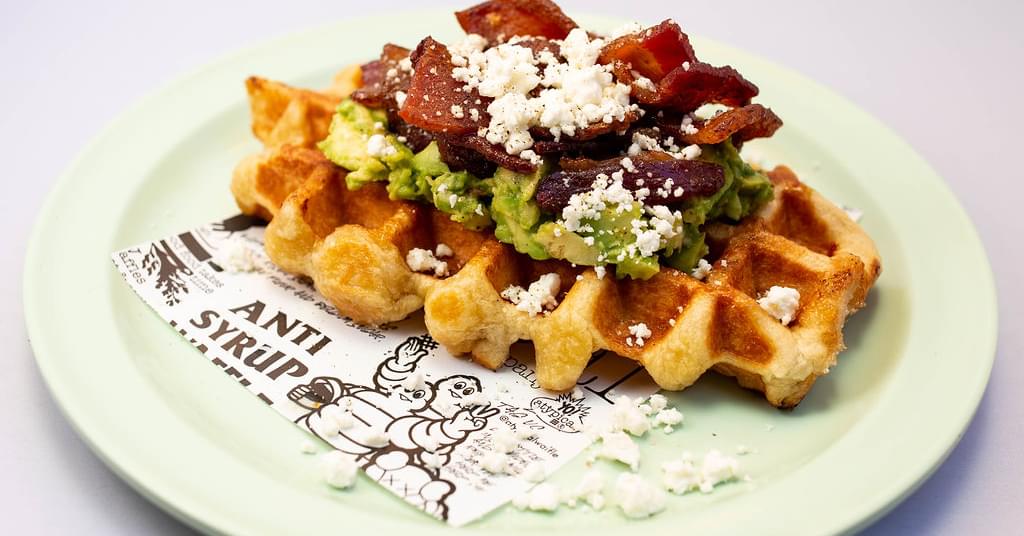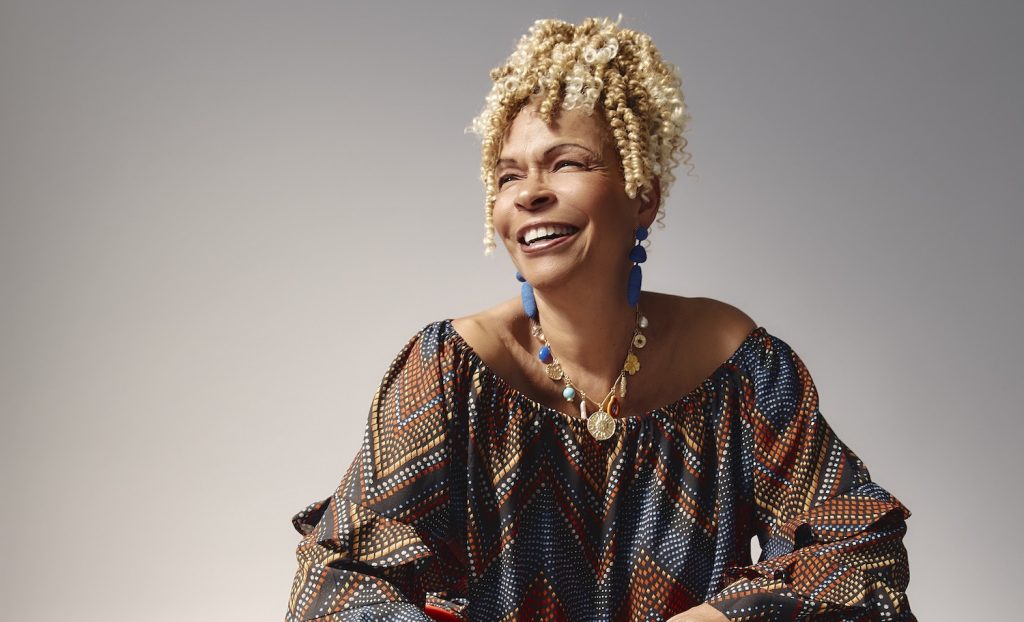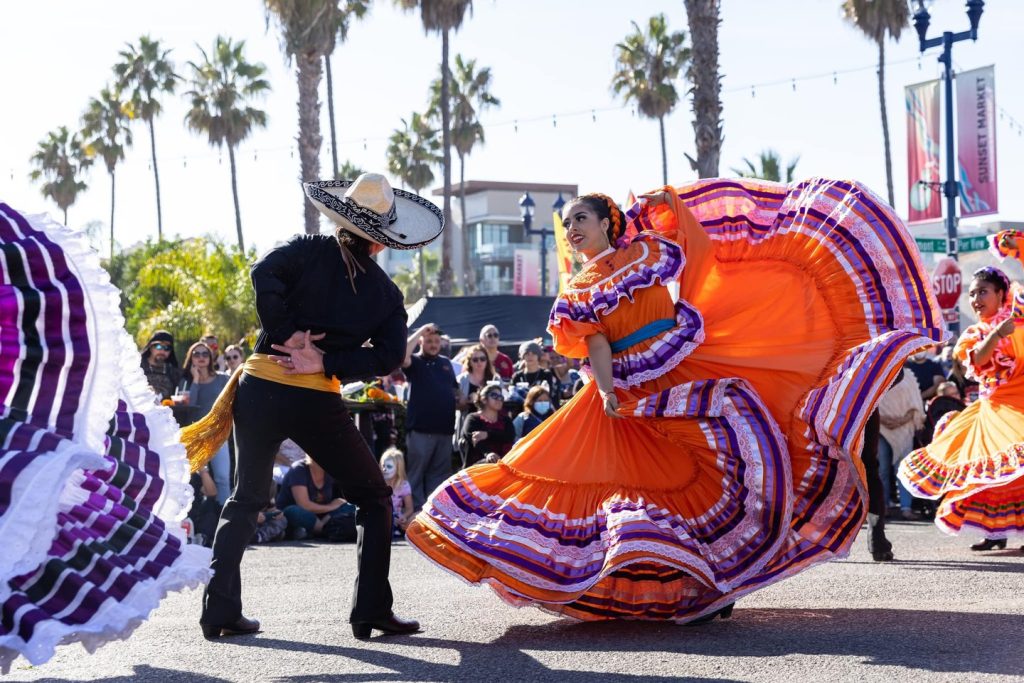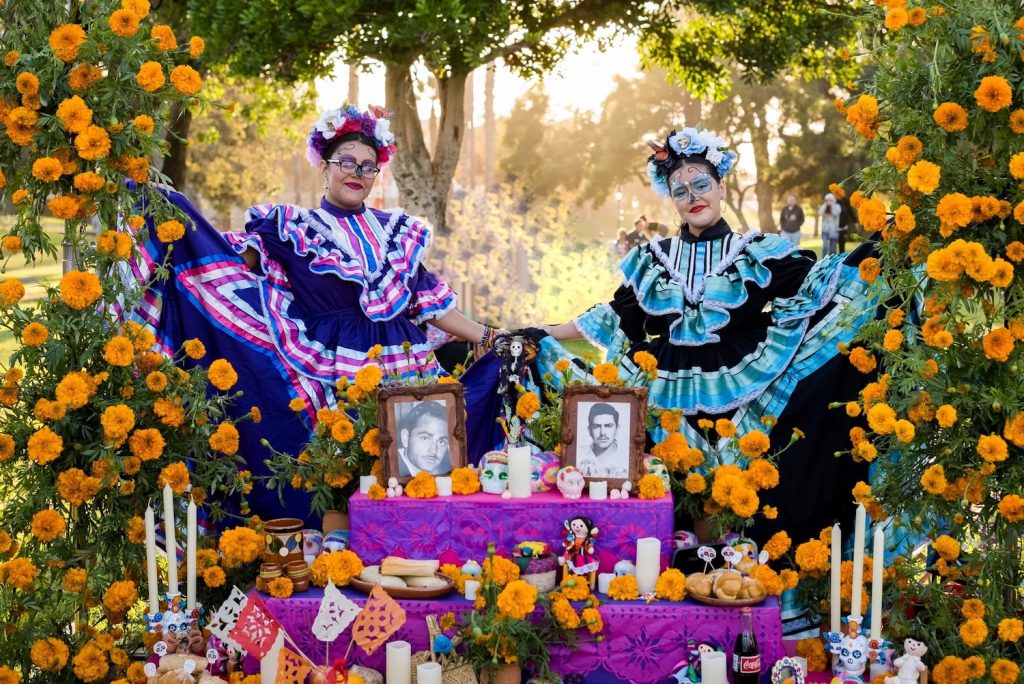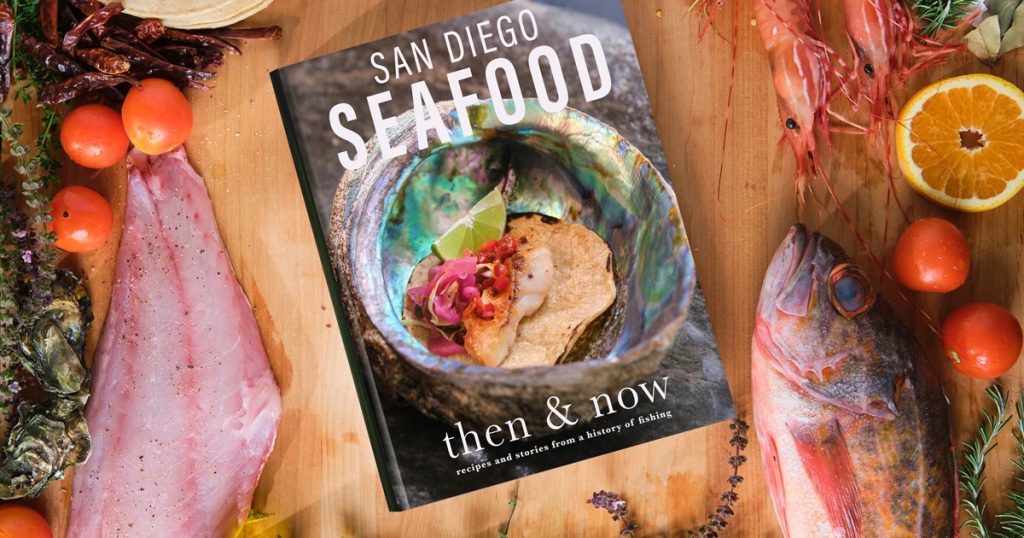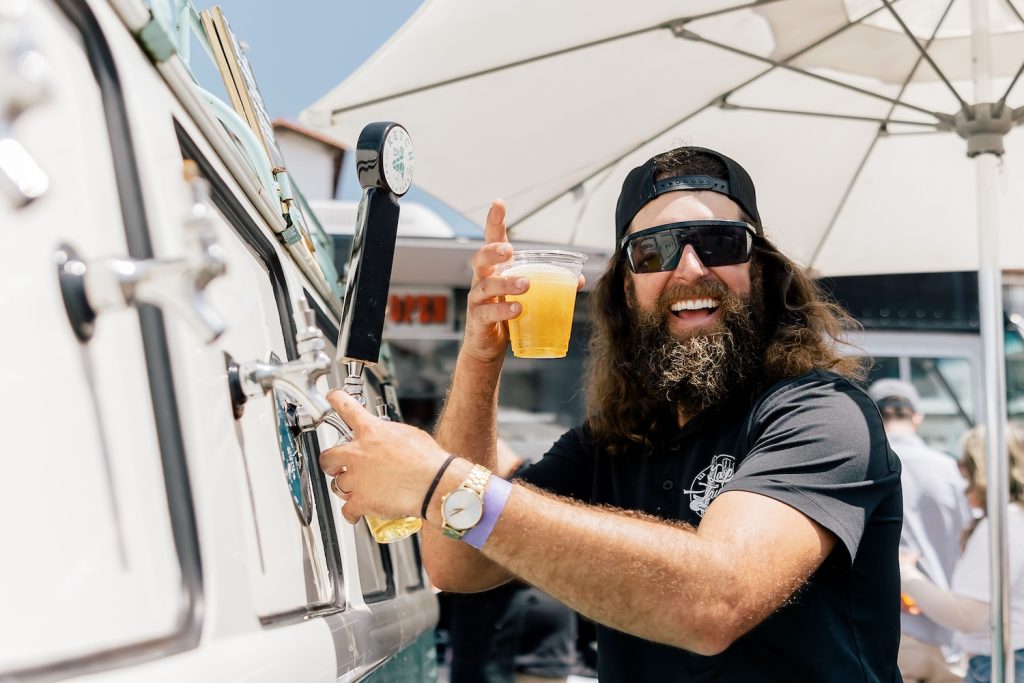“I never thought we’d go from my little shop outside our house to winning a world title that fast,” surfboard shaper Justin Ternes says.
We’re in a styrofoam-dust-covered shop in Barrio Logan, where Ternes and his team produce about 1,200 of the highest-performance surfboards on the market each year under the label Dark Arts. Founded in 2019, Dark Arts uses a groundbreaking mix of craft and technology. The company’s carbon fiber boards are now under some of the best surfers in the world, including Kelly Slater, John John Florence, and Mason Ho. And it all started in Ternes’ backyard.
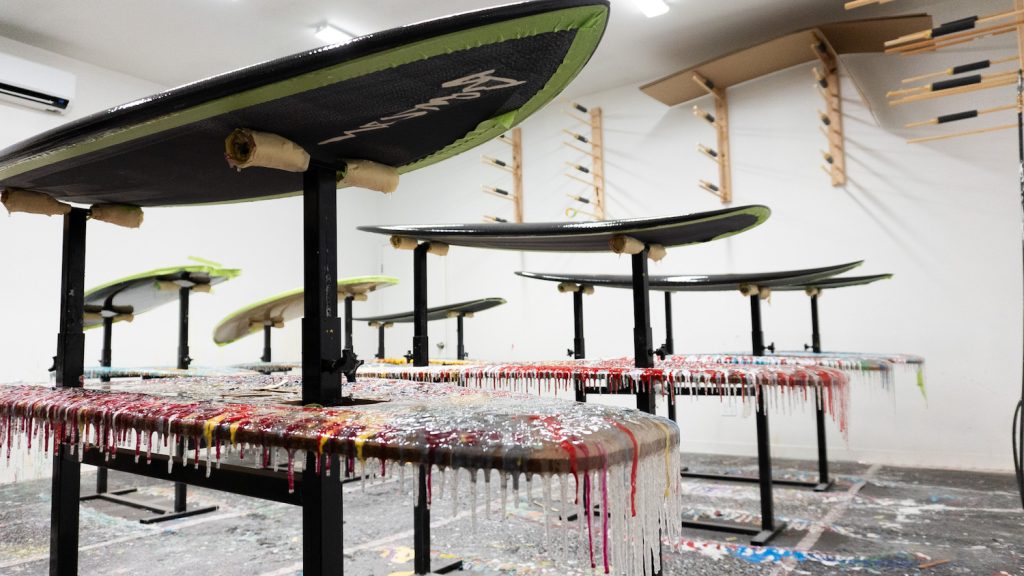
Colorful resin stalagtites from thousands of Dark Arts boards litter the glassing room in the company’s Barrio Logan facility.
“I found my spark and wanted to create a lane,” Ternes says. “That was my thing. I want to do something difficult and do it well. Carbon fiber really has its advantages, as far as performance and weight to strength goes. I realized that nobody [in the shaping industry] had done it well.”
But it wasn’t a straight line to get here. After stints with San Diego shaper Dan Mann at Northwind Glassing and then at Firewire, a massive global epoxy-based board company, Ternes stepped away from shaping.
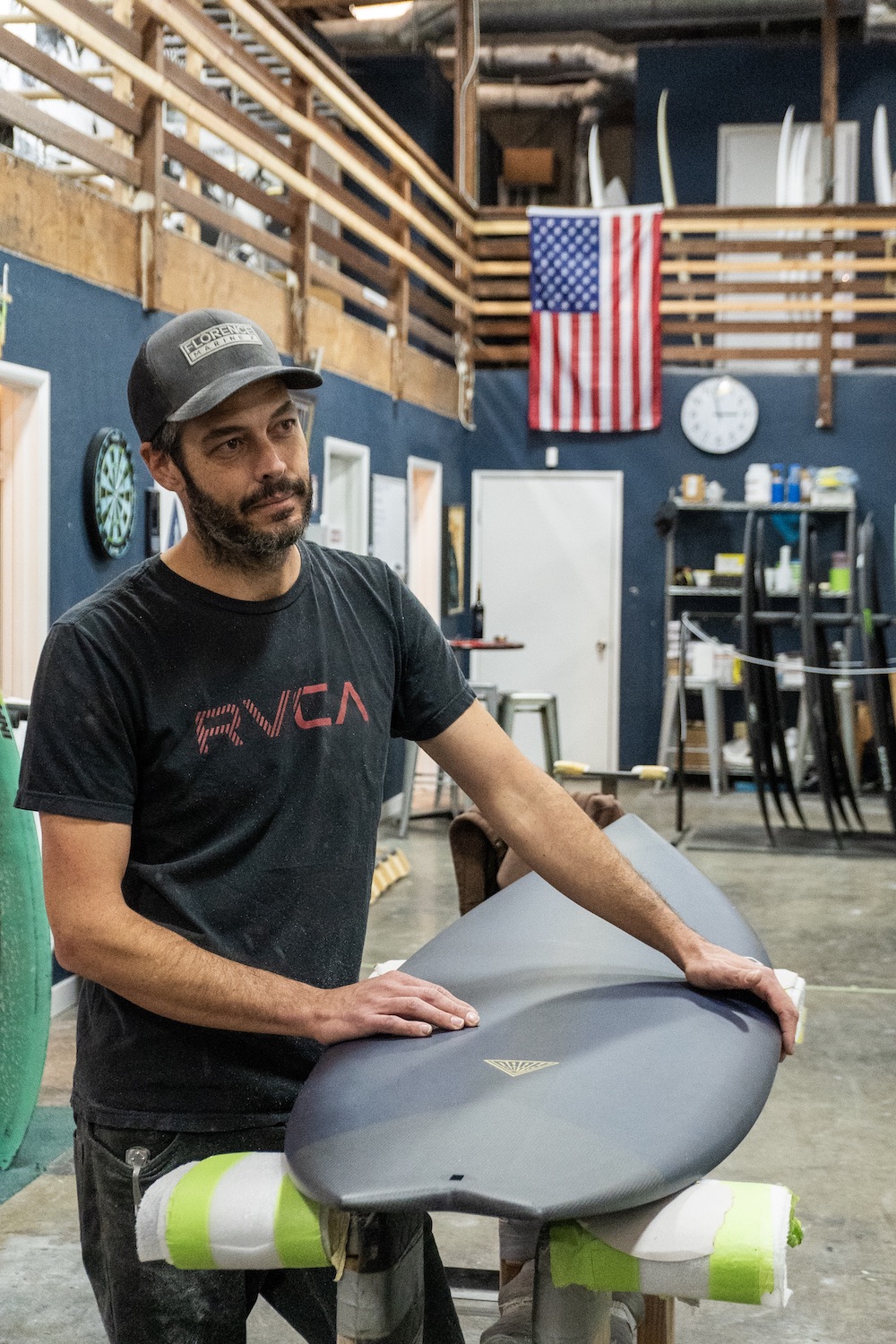
Ternes shows off a board designed with carbon kevlar composite, the same material used in modern bulletproof vests.
“I took a break for probably three years. I didn’t really want to touch surfboards or make them,” he says.
It was his wife, Monica Hoover—a gallery owner and longtime surf photographer—who gave him the push he needed to get back to his passion. Two metal shipping containers outside their home in Jamul became the birthplace of Dark Arts. Ternes spent years fine-tuning his construction until he cracked the code, while Monica developed the company’s branding, with her old friend, artist Shepard Fairey, providing the logo.
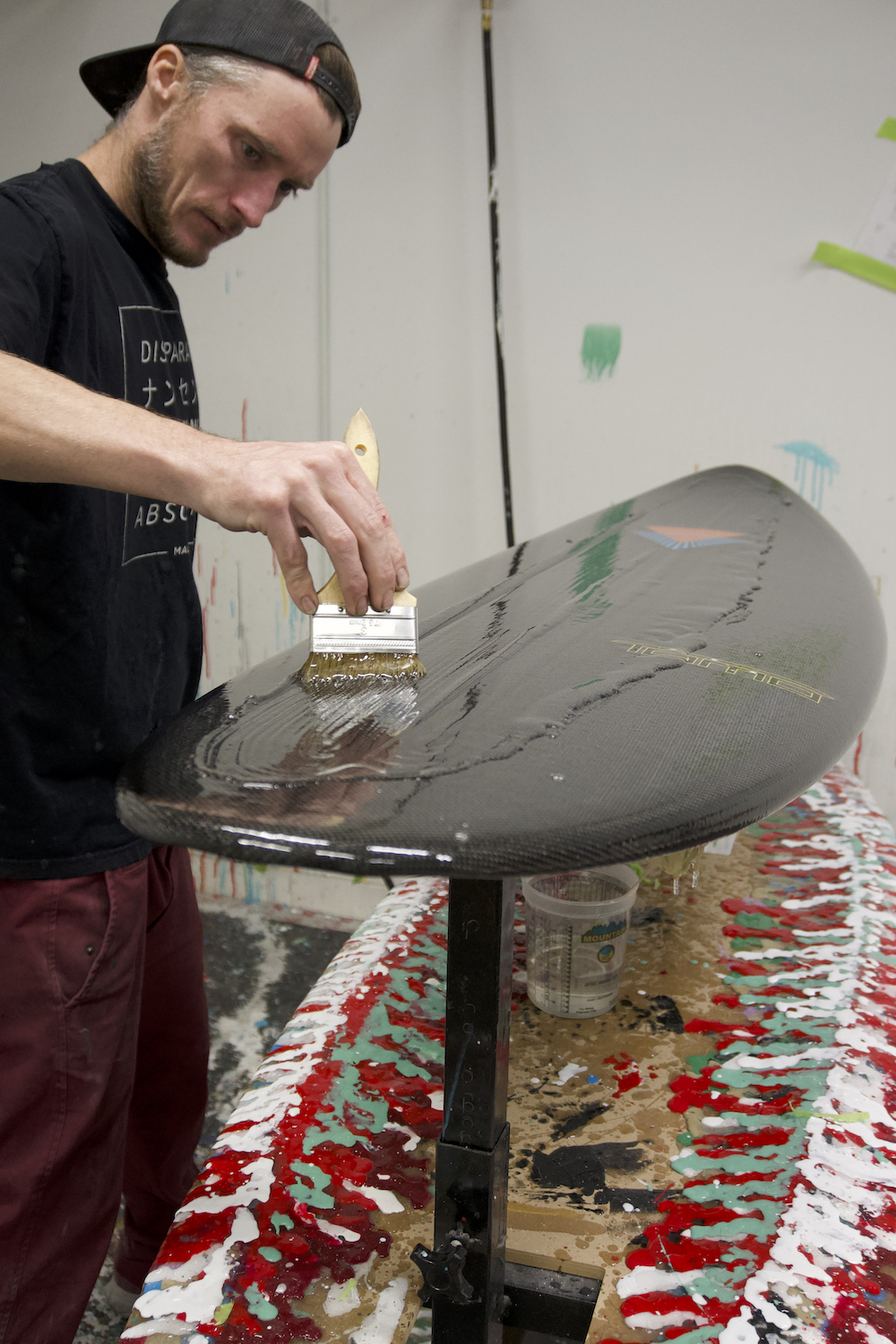
Applying a layer of epoxy resin.
Ternes developed a way to overlay and vacuum a carbon fiber weave onto a shaped board. The result is a construction five times more durable than traditional polyurethane boards.
Ternes’ innovation quickly caught the attention of the world’s top surfboard shapers, including Jon Pyzel and Rusty Preisendorfer, who sought partnerships to develop carbon fiber versions of their most popular models.
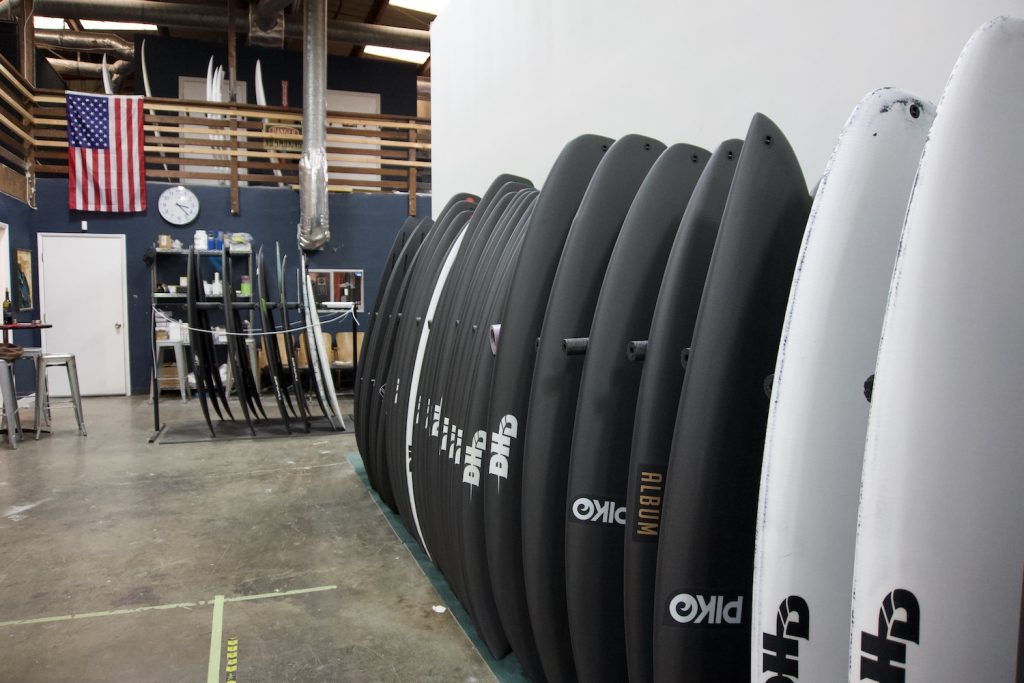
Shaping boards, just like riding them, requires putting in the time, waiting your turn, and appeasing the old guard that runs the industry. “Surfing is a weird culture,” Ternes says. “You have to tread lightly. Even though you can make a product that’s really good, they’ll still try to shoot you down. If the legendary shapers back you, then that barrier of entry is a little easier.” It seems that Dark Arts has earned its place. After all, the current number-one surfer on the planet, Filipe Toledo, rode a Dark Arts board to his first World Surf League title at Trestles only three years after the company’s inception. That fast, indeed.
